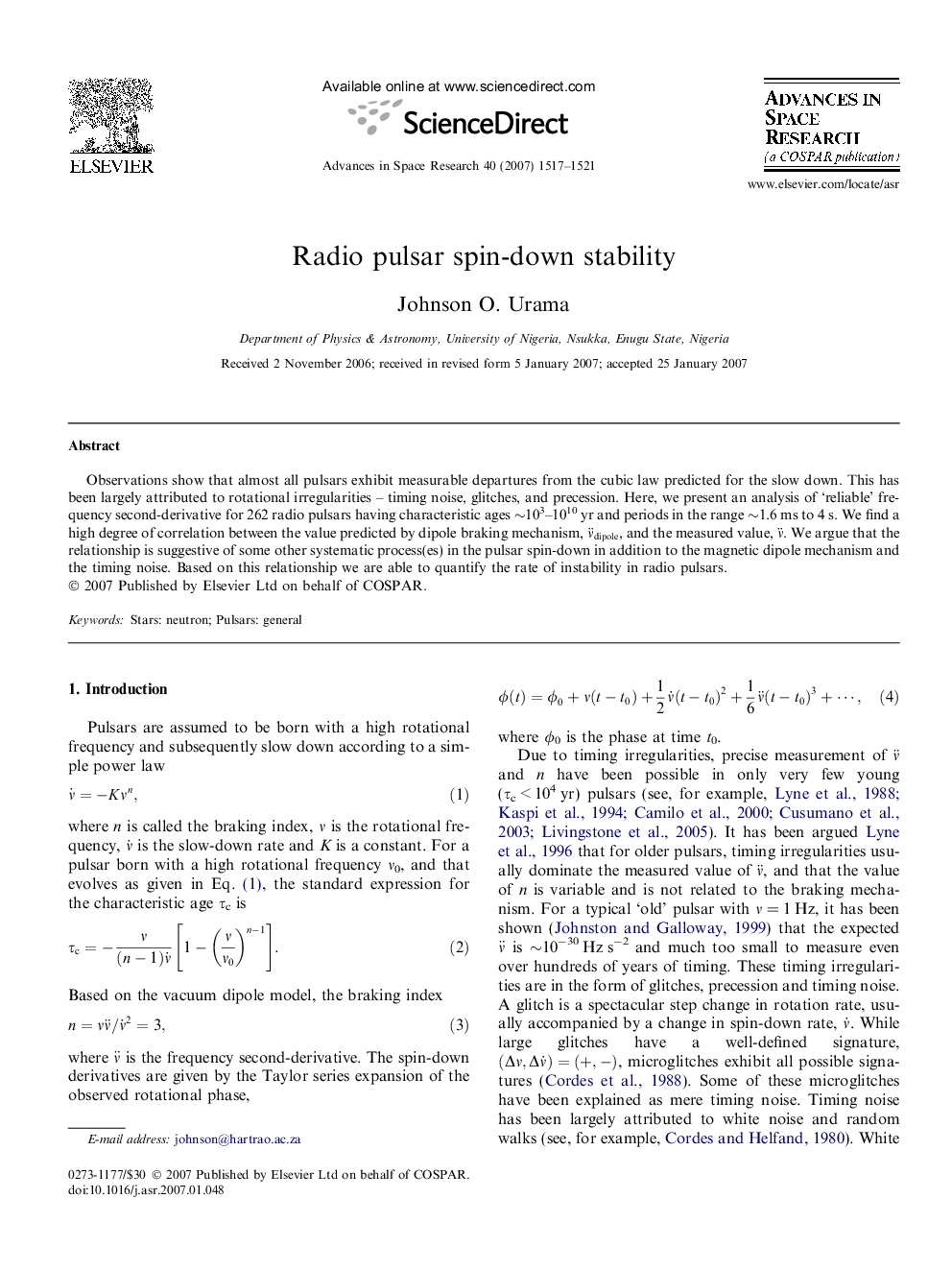| Article ID | Journal | Published Year | Pages | File Type |
|---|---|---|---|---|
| 1766658 | Advances in Space Research | 2007 | 5 Pages |
Observations show that almost all pulsars exhibit measurable departures from the cubic law predicted for the slow down. This has been largely attributed to rotational irregularities – timing noise, glitches, and precession. Here, we present an analysis of ‘reliable’ frequency second-derivative for 262 radio pulsars having characteristic ages ∼103–1010 yr and periods in the range ∼1.6 ms to 4 s. We find a high degree of correlation between the value predicted by dipole braking mechanism, ν¨dipole, and the measured value, ν¨. We argue that the relationship is suggestive of some other systematic process(es) in the pulsar spin-down in addition to the magnetic dipole mechanism and the timing noise. Based on this relationship we are able to quantify the rate of instability in radio pulsars.
